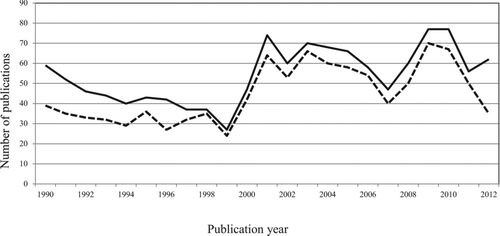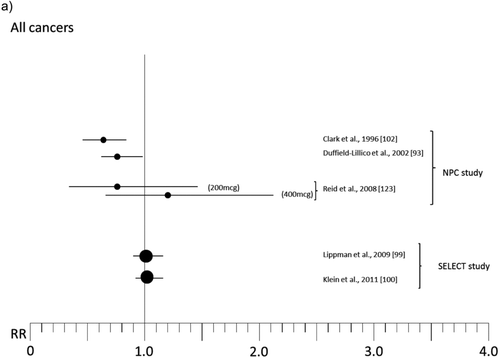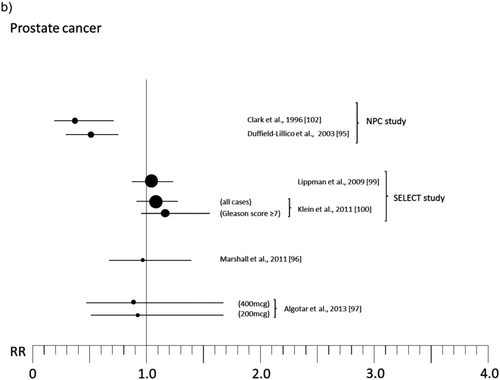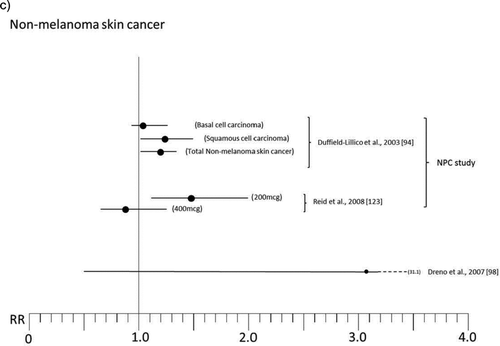Figures & data
Table 1 Median Values (μg/l) of Se Chemical Species Identified in Blood (Serum) and Cerebrospinal Fluid (CSF) of 24 Human Subjects, with Their Squared Correlation Coefficients (r2) (Published and Unpublished Data from Solovyev, Berthele, and Michalke [Citation32])
Table 2 Summary of Effect of Se Supplementation on Human Cancer Risk by Cancer Site (Dose of 200 μg/Day as Organic Se When Not Otherwise Specified)




![Figure 3 Relative risk (RR) for selected cancers in a natural experiment investigated in Reggio Emilia, northern Italy, where residents consumed drinking water with high inorganic hexavalent Se content (around 8 μg/l) as only distinctive feature (Vinceti et al., 1995, 1998, and 2000 [Citation119, Citation121, Citation130]).](/cms/asset/18b34572-bec0-4129-b9f9-d6554362f72c/lesc_a_844757_o_f0003g.gif)